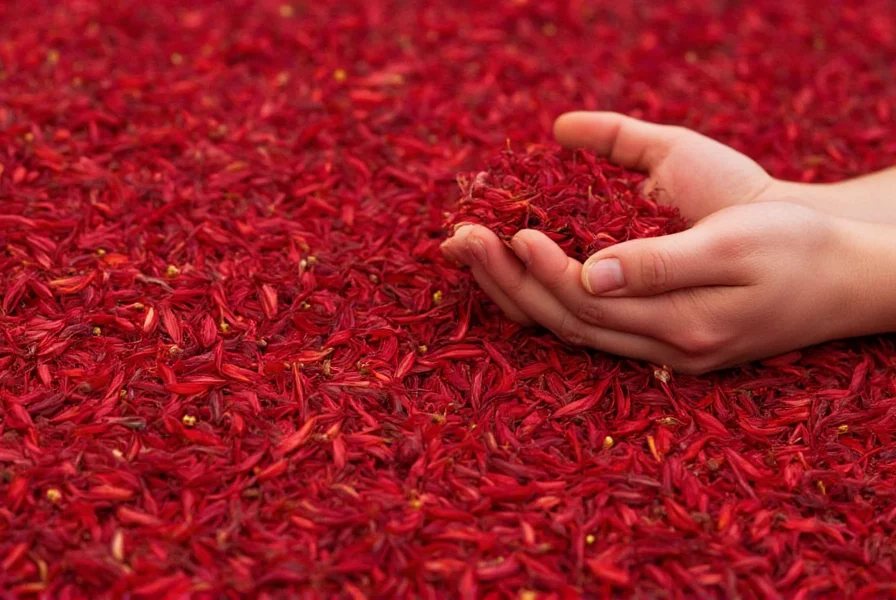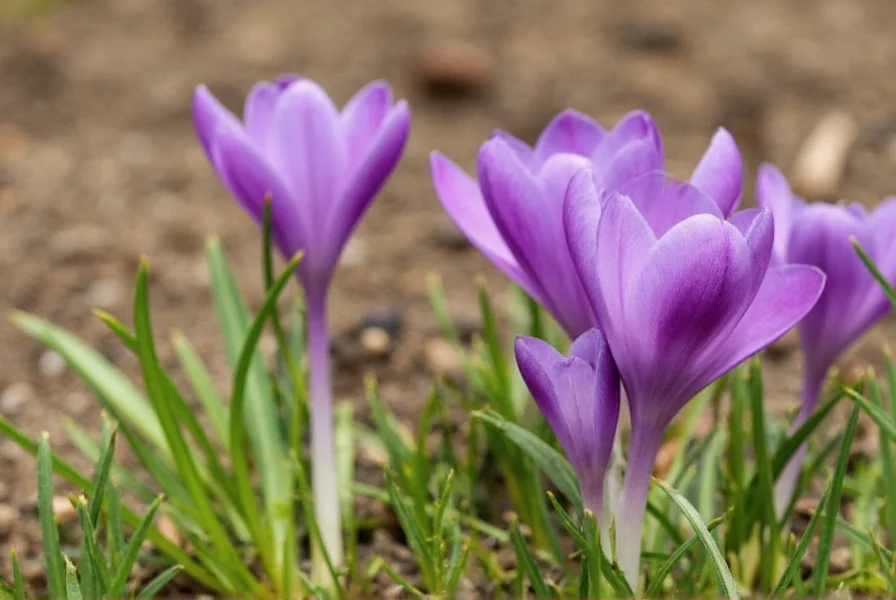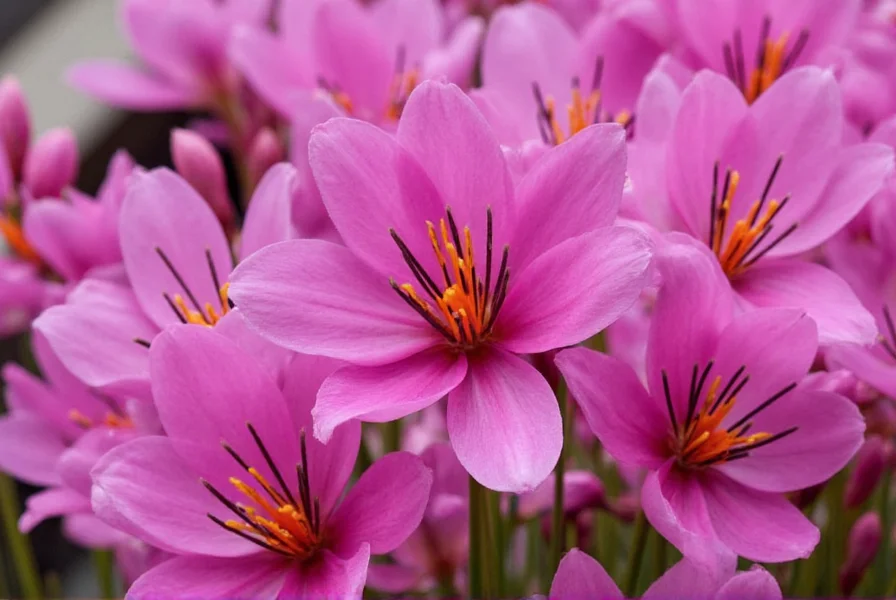Saffron agriculture represents one of the most labor-intensive and valuable spice cultivation systems globally. The saffron crocus (Crocus sativus), a sterile triploid that reproduces only through corms, demands specific environmental conditions and precise agricultural practices to thrive. Understanding saffron farming climate requirements is essential for successful production, as this delicate flower cannot tolerate excessive moisture or extreme temperatures.
The Biology of Crocus sativus
Saffron comes exclusively from the dried stigmas of Crocus sativus, a fall-blooming perennial that grows from corms rather than seeds. This sterile species cannot reproduce sexually, requiring farmers to propagate through corm division. Each saffron crocus cultivation cycle begins with planting healthy corms at proper depth (15-20 cm) in well-prepared soil during summer dormancy. The plants remain dormant through summer heat, then sprout in autumn when temperatures cool and rains begin.
Optimal Climate and Soil Conditions
Saffron farming climate requirements are quite specific. The ideal saffron-growing regions feature:
- Dry summers with temperatures between 25-35°C (77-95°F)
- Cold winters with temperatures dipping below 5°C (41°F) but rarely below -15°C (5°F)
- Autumn rainfall of 100-200 mm during flowering period
- Full sun exposure throughout the growing season
| Climate Factor | Optimal Range | Problem Conditions |
|---|---|---|
| Summer Temperature | 25-35°C (77-95°F) | Excessive heat (>38°C/100°F) damages corms |
| Winter Temperature | 0-10°C (32-50°F) | Prolonged freezing damages flowers |
| Annual Rainfall | 300-500 mm | Excessive moisture causes corm rot |
| Soil pH | 6.0-8.0 | Acidic soils reduce yield |
Saffron soil preparation must prioritize excellent drainage, as waterlogged conditions quickly destroy corms. The ideal soil is loamy or sandy-loam with high calcium content (calcareous). Farmers typically amend heavy soils with sand, gravel, or organic matter to improve drainage before planting. Soil testing before saffron cultivation helps determine necessary amendments for optimal pH and nutrient balance.

Cultivation Techniques and Timing
Saffron crocus cultivation techniques begin with selecting high-quality corms (bulb-like structures) of 8-10 grams each. Larger corms produce more flowers. Planting occurs in mid-summer (July-August in Northern Hemisphere), with corms spaced 10-15 cm apart in rows 20-30 cm apart. The planting depth varies by soil type—deeper in sandy soils (20 cm), shallower in clay soils (15 cm).
During the summer dormancy period, fields require minimal irrigation. As autumn approaches and flowering begins (typically October-November), saffron irrigation methods become critical. Light, frequent watering supports flower development without saturating the soil. Overwatering during flowering causes premature flower drop, while underwatering reduces stigma size and quality.
The Labor-Intensive Harvesting Process
The saffron harvesting process represents the most critical and labor-intensive phase of saffron agriculture. Flowers bloom for only 1-2 weeks each autumn, opening early each morning. Harvesting must occur before 10 AM when temperatures rise, as heat causes flowers to wilt rapidly.
Each flower contains three precious red stigmas that must be hand-picked with precision. Experienced workers can harvest 150-200 flowers per hour, but extracting the stigmas takes significantly longer—approximately 400-500 flowers per hour. This explains why saffron yield per acre remains low: a well-managed saffron field typically produces 3-12 pounds of dried saffron per acre annually, depending on cultivation practices and climate conditions.
Post-Harvest Processing and Quality Control
After harvesting, the saffron post-harvest processing begins immediately. Stigmas must be separated from flowers within hours to prevent quality degradation. The delicate stigmas then undergo drying, which significantly impacts final quality:
- Traditional method: spreading stigmas on fine mesh screens over charcoal or electric heaters at 50-60°C (122-140°F)
- Modern method: using food dehydrators with precise temperature control
- Drying time: 10-12 hours until moisture content reaches 8-12%
Properly dried saffron should be brittle yet retain deep red color and strong aroma. Poor drying techniques result in faded color, weak aroma, and reduced shelf life. Quality grading follows international standards (ISO 3632), measuring crocin (color), picrocrocin (taste), and safranal (aroma) content.

Economic Considerations in Saffron Production
Saffron production economics present both challenges and opportunities. The initial investment for establishing a saffron field ranges from $2,500-$5,000 per acre, primarily for corms and land preparation. However, once established, a saffron field remains productive for 5-7 years before requiring replanting.
Profitability depends on saffron yield per acre and market prices. At current market rates ($5,000-$10,000 per kilogram for high-quality saffron), even modest yields can generate significant returns. However, the labor costs associated with the saffron harvesting process consume 60-70% of production expenses, making labor availability a critical factor in saffron farming viability.
Major Saffron-Producing Regions
While saffron agriculture occurs in over 50 countries, three regions dominate global production:
- Iran: Produces 90-95% of world's saffron, primarily in Khorasan province
- India: Kashmir region produces high-quality saffron with Protected Geographical Indication status
- Spain: Traditional producer with established quality standards and export markets
Emerging saffron farming regions include Greece, Morocco, Italy, Azerbaijan, and even some parts of the United States (California, Pennsylvania) where farmers are experimenting with saffron cultivation techniques adapted to local conditions.
Challenges in Modern Saffron Agriculture
Saffron farming challenges continue to evolve in the modern agricultural landscape:
- Labor shortages: The saffron harvesting process requires many skilled workers during a narrow timeframe
- Climate change: Unpredictable weather patterns affect flowering consistency and quality
- Adulteration: The high value of saffron makes it vulnerable to fraud and quality dilution
- Market volatility: Price fluctuations impact long-term planning for saffron farmers
- Pest pressure: Saffron pest management requires careful monitoring as few pesticides are approved for this delicate crop
Researchers are addressing these challenges through improved saffron crocus cultivation techniques, including developing higher-yielding varieties, mechanizing certain processes without compromising quality, and implementing precision agriculture approaches to optimize water and nutrient use.
Future Prospects for Saffron Farming
The future of saffron agriculture appears promising despite challenges. Growing consumer interest in premium, authentic spices has increased demand for high-quality saffron. Farmers adopting sustainable saffron farming practices and implementing quality control measures throughout the production chain are finding premium markets for their products.
Advancements in saffron irrigation methods, particularly drip irrigation systems tailored to saffron's specific needs, show potential for improving water efficiency without sacrificing yield. Similarly, research into saffron pest management using integrated approaches reduces reliance on chemical controls while maintaining crop health.
Conclusion
Saffron agriculture represents a unique intersection of tradition, precision farming, and economic opportunity. While the challenges of saffron farming are significant—from the demanding saffron harvesting process to climate vulnerabilities—the potential rewards make it an increasingly attractive option for specialty crop farmers worldwide. As consumers continue to seek authentic, high-quality spices, farmers who master saffron crocus cultivation techniques while maintaining rigorous quality standards will find growing markets for their premium product. The future of saffron agriculture lies in balancing traditional knowledge with modern agricultural innovations to sustainably produce this precious spice for generations to come.











 浙公网安备
33010002000092号
浙公网安备
33010002000092号 浙B2-20120091-4
浙B2-20120091-4